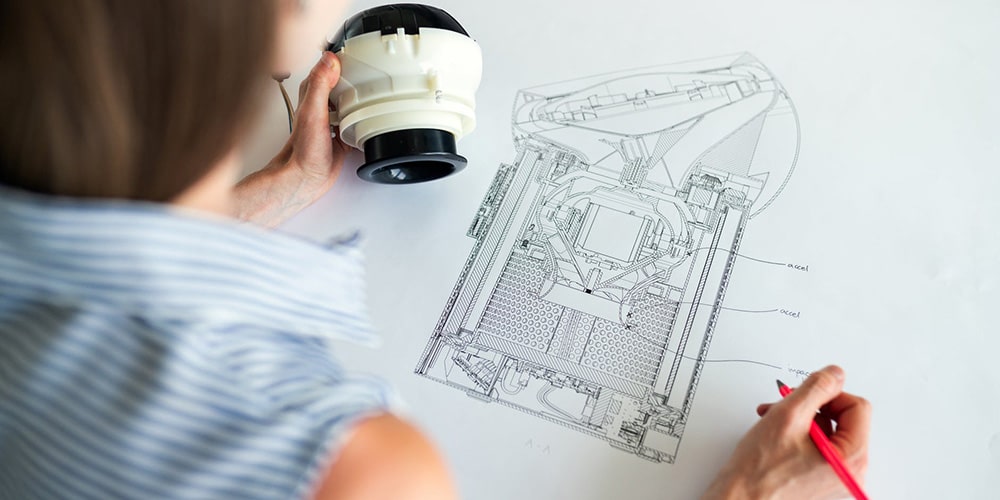
The Definitive Guide of Interior Design Style- Part I
Table of Contents
The definition of interior design is, Interior design is all about how we experience spaces. It’s a powerful, essential part of our daily lives and affects how we live, work, play, and even heal. It is the art and science of improving the interior of a space to achieve a healthier and aesthetically more pleasant environment for people who use the space. Interior design is an on demand career option for applicants who are interested in this art form. Animaster being reputed bachelor of interior design colleges in Bangalore, always come up with articles which the readers can find interesting. Today we will talk about styles and trends in interior design and with this post, we will experience a new dimension of creative freedom.
We will talk about the most popular interior design styles. As we have categorized 18 different styles, we will talk about 9 styles in this blog and the other 9 will be followed up on our next blog. So without further ado, let’s get started.
9 styles of Interior Design
- Kitsch style in interior design
The Kitsch style has appeared not so long ago, and it is a new category to take into account if we talk about styles and trends in interior design we have to talk about the Kitsch style. The definition of the Kitsch style in interior design is when bad taste becomes the reason for the choice, and the total irreconcilability of colors is the main feature of the kitsch style.
Placing a golden molding on a blue ceiling with bright stars, bathtubs with palm trees and ceramic tiles with oriental motifs can be a clear example. The design of a Kitsch-style apartment or house has recently become a bright place. Besides, it limits the exotic. The essence and the birth of the Kitsch style in interior design are connected with the repetition and re-interpretation of existing classic designs. Kitsch is a mix between the real and who dreams of it. But these dreams must have a natural sense of artistic and proportional tastes.
The color scheme in the Kitsch style in interior design provides almost everything: from bright pink to green or purple tones. Although the colors red and gold, black and white have been the leaders for several years, it is one of the most personal interior design styles.
- Industrial style in interior design
The industrial style in interior design as its name suggests is inspired by a warehouse or an urban loft. To find the key to industrial-style interior design, you have to proudly show the building materials that many try to hide. It is one of the most special interior design styles.
In the interiors with an industrial style, there is a feeling of unfinished crudeness in many of the elements, an iconic house with an industrial-style theme would be a renovated loft of an old industrial building. When we talk about industrial style, we must think of high ceilings, old wood and hanging metal lamps, with little furniture. You can not miss one or two pieces of abstract art or photographs to add a touch of color to a scheme in which the base is neutral, derived from the primary materials of wood and metals.
- Modern Style in interior design
The word “modern” is one of the most misused definitions in interior design. Often confused with contemporary style, today’s modern style is based on a design movement that was born in the early twentieth century. The modern-style movement continued to grow in popularity throughout the first half of the century, and subsequent derivatives of this style are known as the mid-modern and post-modern centuries. It is one of the purest interior design styles.
With roots in German and Scandinavian architecture and design, the modern style is simple and unadorned. It refers to the 1920s to 1950s. Modern-style furniture and decoration use natural materials, neutral or earthy colors and the elimination of unnecessary details. One of the key beliefs behind the modern design movement is the idea that “form follows function.” In other words, the design of all furniture and decorative objects should reflect its intended purpose, and if a decoration detail does not have a practical purpose then it can be eliminated.
- Contemporary style in interior design
In interior design, if you like to keep up with the styles of the moment, you are a follower of the contemporary style. Today’s homes, contemporary interiors are comfortable and cozy, without being crowded and dark. Fundamentally, a contemporary style in interior design is defined by simplicity, subtle sophistication, deliberate use of texture and clean lines. Interiors tend to show space instead of things. By focusing on color, space, and form, contemporary interiors are elegant and fresh.
The most obvious and distinctive element of contemporary interior design is found in architectural details, the use of brightly colored blocks, high ceilings, bare windows, and geometric shapes. Furniture pieces must make a bold statement but at the same time, they must be simple and tidy, without curves or decoration. Smooth, clean and geometric shapes are essential.
- Minimalist style in interior design
After leaving its mark on the design scene and, understandably never disappearing as an important moment of style in the early 90s, the minimalist interior design style is often an infallible route to create a warm and nuanced home that it is worth investing and it will never go out of style or out of trend thanks to practical and well-judged approaches. The main mantra of the minimalist home style is simplicity.
The minimalist design is more than it seems. It is a space where you can think clearly, minimalist style lovers see the simple. Where some may think it is a cold interior, minimalists see an elegant space.
- Nordic Style in interior design
No wonder the Nordic style is so popular, it pays tribute to the simplicity of life demonstrated in the Nordic countries. It speaks of both the love for trends and the desire to live in comfortable and welcoming environments. You have probably heard of the term “Nordic style”, it has been used so many times that you have begun to wonder exactly what it means. I can sum it up quite simply: white walls, wooden floors, and modern furniture, but there has to be more in history, right?
Well yes, there are, other common features, neutral colors of the Swedish, Norwegian and Danish landscape with a casual aged appearance. The long winters and the lack of natural light in these countries created the need for elegant and spacious interiors that take full advantage of the available sunlight.
- Eclectic style in interior design
The eclectic style may seem intimidating at first, it may give you the feeling of unattainable. Good eclectic style spaces avoid harmonizing seemingly disparate styles, textures, and colors while using some key tricks to bring it all together.
In an eclectic style interior, it is about creating a controlled chaos appearance, creating a level of visual complexity. The main objective of the eclectic style is to create a unique space, which does not resemble anything you can find in a catalog or a shop window. In short, the eclectic style in interior design has to do with the harmony of mixing disparate styles.
- The romantic style in interior design
Contrary to popular belief, the romantic style is not all floral prints and frills. And it’s not just about rose petals that extend over red satin bedding. The beauty of the romantic look lies in its versatility. Pieces of the romantic style can be spread in almost any type of space, from rustic to contemporary.
In the romantic style, it is about appealing to the senses and creating a warm, cozy and timeless space. Both prefer delicate shapes and are inspired by the picturesque French country houses, but the romantic style in the interior design takes more from its aesthetic the French neoclassical style and the timelessness of traditional interiors. Romantic-style spaces revitalize the senses, so flashy art, scented candles, and fresh flowers are a must.
- Art Deco Style in interior design.
The Art Deco style is one of the most iconic of the twentieth century, a symbol of glamor and sophistication defined by the twenties. It was a revolutionary change that moved away from the austerity and heavy decoration of the Victorian era and has remained as current throughout the years as it was at the beginning.
The fundamental characteristics of the Art Deco style are a tendency towards geometric lines (in particular the rectilinear ones), monochromatic palettes, and the inclusion of influences of the Industrial Revolution, which gives it an eternally modern look. The stylized sunbeams stepped motifs, and references to the cultures of Africa, Russia, and Egypt are common indicators.
Thus here we come to an end with our first part of ‘The Definitive Guide of Interior Design Style’. In conclusion, we would like to say that the interior design career is vast. There is a lot of learning that one has to undergo. Getting a degree in interior design is not enough. It is a continuous process where you cannot stop learning. In Animaster we try and give all the facilities that can help a student build his/her career in interior design. In our upcoming blog, we will put some light on the other styles.
Keep reading!



